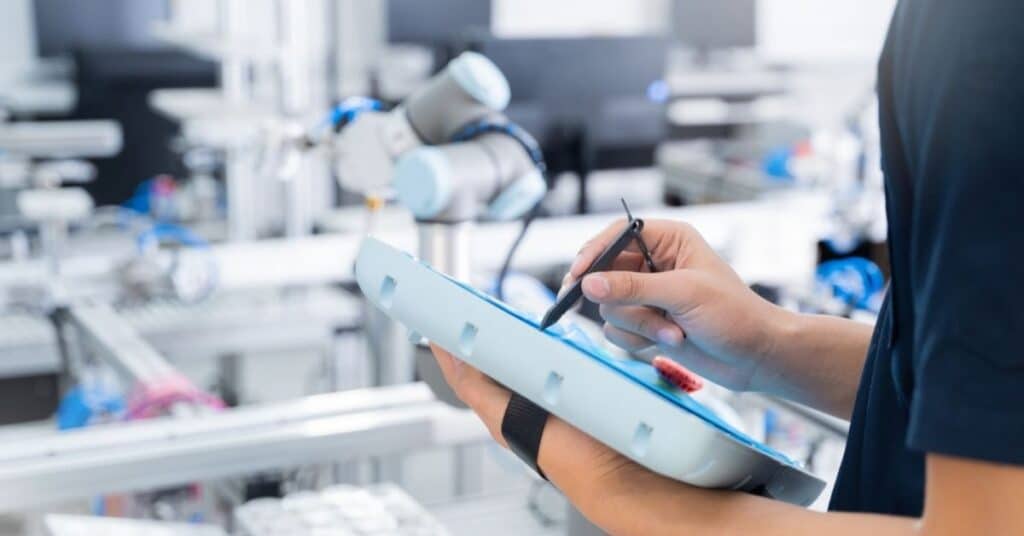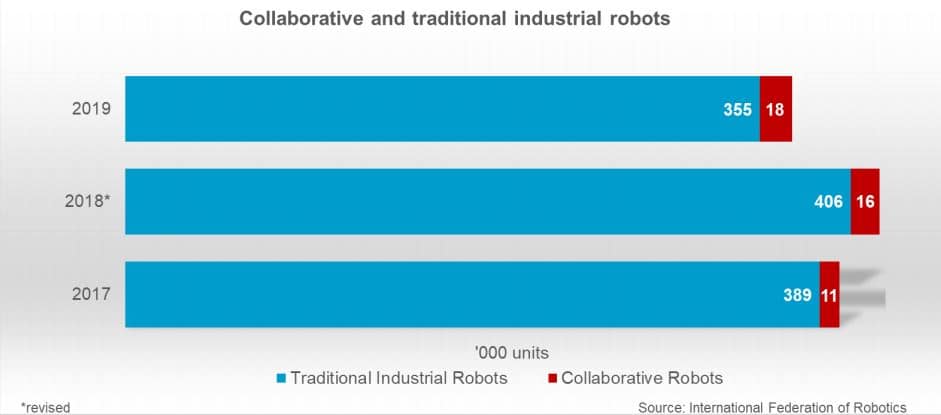
Robotics: A powerful partner during Covid-19
With factory closings, shortages, delivery disruptions, and a paralyzed supply chain, the pandemic that has turned the world upside down is more than ever highlighting the pressure that the world economy is putting on manufacturing production. A host of factories are now turning to traditional and collaborative robotics in order to overcome the major challenges raised by COVID-19. In the age of the coronavirus, how can industrial robotics benefit your plant?
Expanding your autonomy
Since March 2020, the pandemic has turned a spotlight on the gaps in the global supply chain. With the temporary shuttering of factories around the world, the entire chain has been put on hold—underscoring the vulnerability of the internationalization of manufacturing production.
Constraints created by COVID-19 swiftly forced manufacturers, suppliers and distributors around the world to rethink their strategies in order to address the fragility of the global supply chain. Plants worldwide have turned to local production and brought part of their production back in-house. To do so, companies have decided to use robotics and automation to create new innovative processes.
Tackling your labour shortage
Many companies today are continuing to grow exponentially and need to “step on the gas” to find the skilled workforce they need to sustain their growth. According to Statistics Canada, as a result of the last two lockdowns, labour force growth is no longer keeping pace with labour demand. Almost 40% of companies have been suffering from labour shortages. This makes it very difficult for them to meet the demand and to carve out a considerable place in the market. This situation is causing significant frustration across the manufacturing sector.
Not to mention cases of self-isolation and waiting for test results that make managing people during COVID a real headache for factories. The result of this situation is that many have decided to rely on innovation and industrial and collaborative robots in order to compensate for this lack of staff, without having to cut jobs. The idea is to replace a non-existent workforce, while also ensuring the growth of manufacturing enterprises.

The figures also show how companies that become more productive enjoy increased revenues, and thus require more staff to support their growth. Hence, robots play a collaborative role with humans.
Adapting to social distancing measures
Since the first stages of the crisis, to quickly relaunch manufacturing production, factories have been trying to adapt the best they can to the physical distancing measures issued by the government. In a context of often confined factory spaces, maintaining a two-metre distance between each worker is nearly impossible. Collaborative robots offer a concrete solution for adapting to this new reality, while allowing synergy between humans and machines within a common workspace.
Implementing traditional and collaborative robotics is an outstanding way to respond to the everyday disruptions that COVID-19 is causing to your manufacturing production.
Since the beginning of the pandemic, dozens of plants have been able to rely on RES Automation Control. Contact us to find out how you can incorporate traditional and collaborative robots into your plant.
Sources:
-
IFR International Federation of Robotics, IFR Press Conference, September 24, 2020
-
Bank of Canada, Business Outlook Survey, 2021
